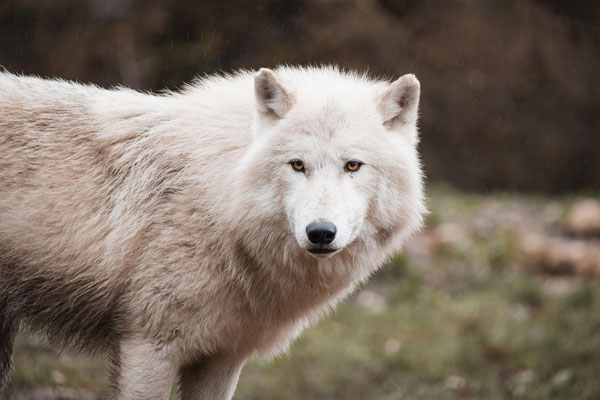Genetic modification creates successful proxies of the ancient Dire wolf

[Wolf, Photo Credit to Pixabay]
On April 7, 2025, Colossal Biosciences, a rising biotechnology company, announced the birth of three pups genetically engineered to resemble the extinct dire wolf, a once-formidable predator that roamed the Americas during the late Pleistocene era.
This groundbreaking discovery sheds light on the possibilities of de-extinction for species thought to be gone from the face of the earth forever.
The dire wolf had gone extinct 13,000 years ago, but fossilized remains allowed scientists to extract their DNA in laboratories.
Using tools like CRISPR, and other tools used for genetic extraction, Colossal modified 20 genes in a modern gray wolf embryo to reflect dire wolf characteristics with as much accuracy as possible.
Out of this innovative display of scientific research, three pups—Romulus, Reemus, and Khaleesi—were born, each pup serving as a reminder of what could be accomplished in the future through reverse extinction.
The pups' names—Romulus, Remus, and Khaleesi—evoke mythology and modern fantasy.
They represent how science can blend with culture to engage public interest in conservation.
Actor Joe Manganiello, best known for his werewolf role in True Blood, joined Colossal’s board, citing his passion for genetics and animals.
He expressed hope that this pioneering effort could inspire a new generation to engage with biodiversity and preservation efforts.
Not all experts, however, are convinced.
Some scientists caution that Colossal has created a copy, but not a complete replica of the dire wolf that once roamed North America.
Genetically, they more closely resemble modern grey wolves, with selected traits derived from ancient fossilized DNA.
Since only fragments of the original dire wolf genome were usable, these animals function as proxies rather than complete clones.
The restoration of dire wolf characteristics raises scientific and ethical questions regarding the creation of hybrid animals to imitate extinct species.
Colossal insists its work extends beyond novelty.
Dr. Beth Shapiro, a scientific advisor to the company, has stated that de-extinction is not about creating “perfect genetic copies of individual animals”, but about “restoring lost ecological functions and enhancing biodiversity.”
Colossal’s hope relies on the fact that the proxy species that are brought back to the modern world are factors that can help restore ecosystems and play an important role in nurturing biodiversity.
Nevertheless, modern habitats diverge greatly from the ancient past.
Reintroducing predators like the dire wolf, especially a genetic copy, requires extensive ecological research and careful examination.
Colossal is also using their knowledge of what de-extinction could provide in the future to apply their tools to help endangered species in the modern world today.
The red wolf, a family member and descendant of the dire wolf, is a critically endangered species mainly inhabiting the southeastern U.S.
Through genetic cloning techniques, Colossal aims to reproduce these species and prevent their extinction, a strategy that could benefit thousands of endangered animals worldwide.
The birth of these three pups represents a development that demonstrates science’s potential to address species loss and attempt to restore ancient species previously considered permanently lost.
The research validates the use of genetic editing tools for reconstructing lost traits and opens up new pathways for ecological restoration.
However, the implications of reintroducing proxy species into modern environments require rigorous study.
Scientists must carefully consider potential unintended consequences of introducing genetically engineered predators into contemporary habitats and proceed with appropriate caution.
As this research progresses, collaborations across multiple disciplines, including genetics, ecology, bioethics, will be crucial to ensure that de-extinction efforts contribute positively to global biodiversity without compromising existing ecosystems.

- Daniel Pi / Grade 11
- Round Rock High School

![THE HERALD STUDENT REPORTERS [US]](/assets/images/logo_student_us.png)
![THE HERALD STUDENT REPORTERS [Canada]](/assets/images/logo_student_ca.png)
